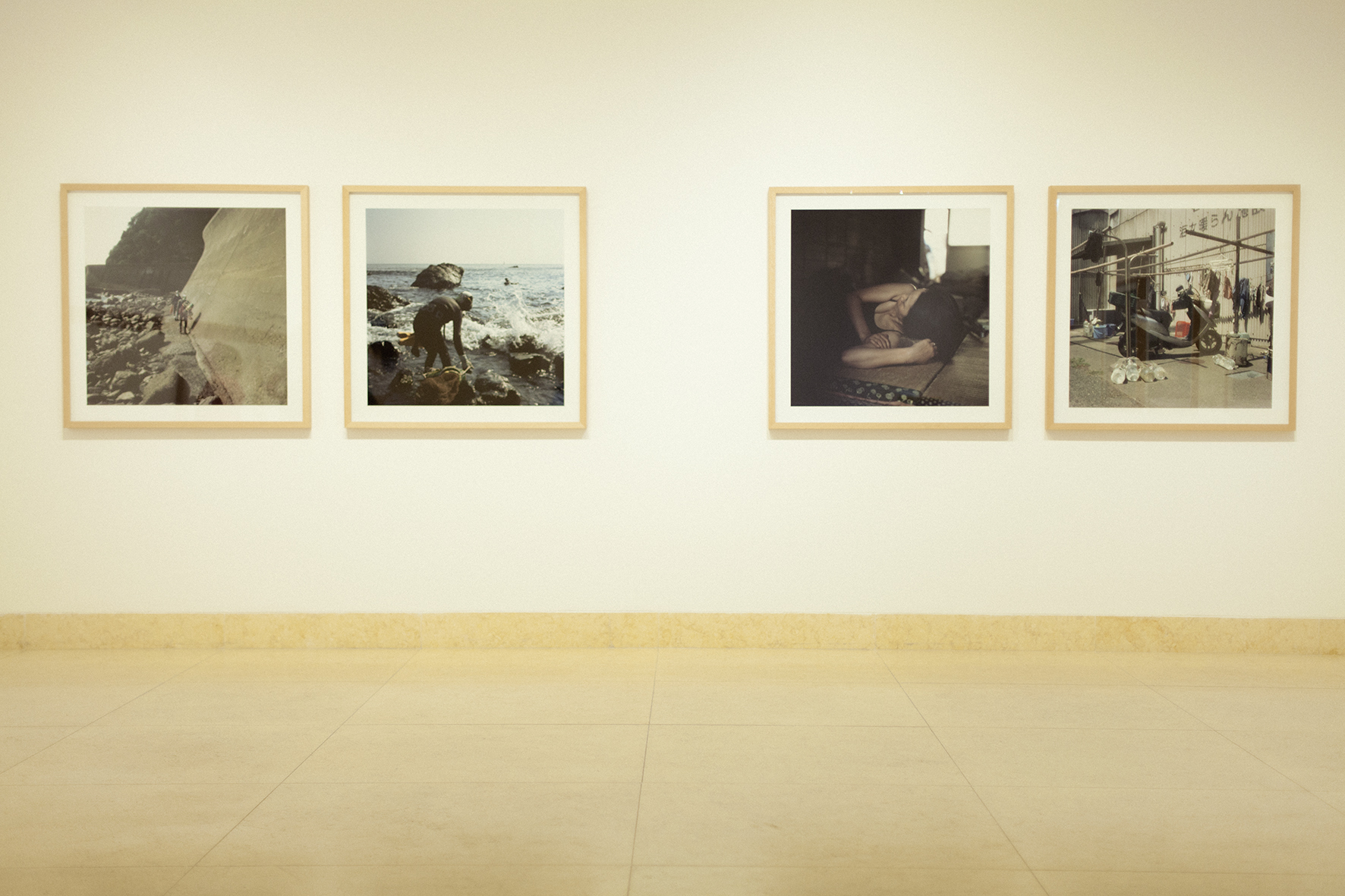

No Japão, um artesão trata com o mesmo cuidado o interior e o exterior, a frente e o verso, as partes visíveis e as invisíveis. Na cozinha, deixam predominantemente os produtos no seu estado mais puro e excluem as misturas de substâncias ou de sabores. Na música o mesmo sucede, não existe sistema harmónico, recusam-se por isso a misturar os sons. Esta singularidade de aproximação à vida encontra-se igualmente no modo de vida das Ama- San.
Ao longo de vários séculos, o mergulho no Japão para colher algas, ouriços, abalones, ostras e as suas pérolas, foi assegurado pelas mulheres, as Ama-San. Sem o auxílio de botija de ar ou outra ferramenta que potencie a capacidade de permanecer debaixo de água, todo o corpo é convocado a atingir o seu limite. Estes mergulhos são dados no Japão há mais de 2000 anos pelas Ama-San, literalmente, mulheres do mar que na cultura japonesa ocupam um lugar especial, sendo reverenciadas e ao mesmo tempo, incompreendidas.
Este trabalho de fotografia resulta de duas viagens ao Japão com o objectivo de preparar e realizar um filme com um grupo de Amas da Península de Ise-Shima. Os rostos e os locais são registados como notas pessoais. É um estudo cinematográfico apesar do seu valor etnográfico. Nesta sequência de fotografias estão retratadas as Ama-San das vilas piscatórias de Wagu, Ijika, Oosatsu e Toushijima.
In Japan, craftsmen work just as meticulously on the interior and the exterior of a piece, its front and its back, its visible and invisible aspects. In the kitchen, the Japanese mostly leave foods in their purest form, keeping ingredients and flavours separate. The same holds true for music, where there is no harmonic structure [in the Western sense], and they refuse to combine sounds. This singular approach to life can also be found in the lifestyle of the Ama-San.
Through many centuries, the task of diving in Japan for algae, sea urchins, abalones, oysters and pearls, has been performed by women, the Ama-San. Without scuba tanks or any other gear to help them breathe underwater, their whole bodies are pushed to the limit. These dives have been undertaken by the Ama-San in Japan for over 2000 years. The Ama-San, literally, women of the sea, play a unique role in Japanese culture, where they are at once revered and misunderstood.
These photographs are the by-product of two trips to Japan to plan and direct a film with a group of Ama from the Ise-Shima Peninsula. The faces and locations are documented as personal notes. It is a cinematographic study, in spite of its ethnographic value. This sequence of images portrays the Ama-San from the fishing villages of Wagu, Ijika, Oosatsu and Toushijima.
日本の工芸品は、内も外も、表も裏も、見えるところも見えないところも、同じように手をかけて作られます。和食ではありのままの素材をできる限り活かし、ほかの味が入らないようにします。こうした傾向は日本の伝統的音楽でも同様で、ハーモニーはなく、音が混ざることをよしとしません。それぞれが持つ「いのち」に近づこうとするその特異な姿勢は、海女たちの生き方にも見受けられます。
日本では、海藻、ウニ、アワビ、カキ、真珠貝などを採るために海に潜るのは、何世紀も前から「海女さん」と呼ばれる女性たちです。長時間潜水するためのタンクやその他の道具を使うことは一切なく、彼女たちは身一つで限界まで潜っていきます。こうした潜水法は日本の海女たちの間で二千年以上も受け継がれており、「海女」という文字通り、海の女の彼女たちは日本の文化でも特異な地位にあり、尊敬は受けつつも深く理解はされていない、というのが実情です。
本書の写真は、伊勢の志摩半島の海女たちの姿を映画化する準備のために二度、日本を訪れた際に撮影したものです。個人的な記録として、彼女たちの顔と場所を写真に収めました。民族誌学的価値のある写真ではありますが、目的は映画のための習作です。撮影は、志摩の漁村、和具、石鏡、相差、答志島で行われました。





com o apoio / with the support of FUNDAÇÃO ORIENTE